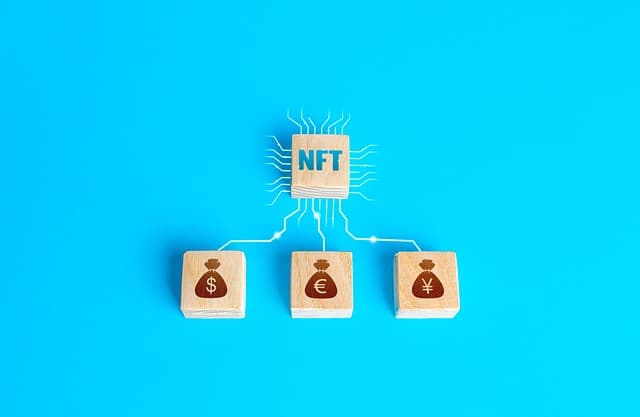Simply put, proof-of-work and proof-of-stake are two different ways in which you can mine cryptocurrencies. More specifically, proof-of-work and proof-of-stake are two types of consensus mechanisms that are designed to solve the trust problem between participants in a blockchain network. The proof-of-work and proof-of-stake debate may seem technical at first glance, but it reflects fundamental differences in how cryptocurrency networks approach achieving their goals. The confrontation between the two algorithms touches on key issues of network security, environmental sustainability, barriers to entry, and achieving decentralization.
Blockchain networks are often characterized by the word “trustless” to reflect one of the basic principles: the goal of a blockchain system is to guarantee that transactions are honored and recorded as intended, without the need for social trust between parties or intermediaries.
For this to be possible, the network must be designed in such a way that participants are unable – or at least extremely unlikely – to spend units of cryptocurrency twice or roll back previous transactions.
A brief overview of Proof-of-Work
Proof-of-Work is a pioneering system that actually predates Bitcoin (BTC), but has since become an integral part of the world-famous cryptocurrency.
For this reason, the mechanism is sometimes referred to as the Nakamoto consensus, incorporating the pseudonym of the coin’s still-unsolved inventor into its name.
In a proof-of-work blockchain, the majority decision (consensus) is represented by the “longest chain wins” rule. This means that participants in the blockchain network accept the longest chain of blocks as the only valid chain.
The rule prevents the use of multiple chains, each reflecting a different version of the story from the existing ones. The longer the consensual version of the blockchain becomes, the more computing power and resources it would take to – theoretically – roll it back.
For the longest chain rule to work reliably, adding new blocks to the chain must be difficult, i.e., costly and time-consuming. Network participants compete to solve difficult cryptographic problems and become the first in the network to successfully verify each new block. Figuratively, this process is called “mining”.
A proof-of-work problem requires multiple, repeated attempts that consume a significant amount of computing power (“work”) before it can be successfully solved. That’s the main point – try again, fail again, fail better – as Sam Beckett would say.
Proof-of-Work Bitcoin mining
Satoshi Nakamoto explained in the Bitcoin white paper that “the longest chain serves not only as proof of the sequence of events that have been witnessed, but also as proof that it originated from the largest CPU pool by power.”
Based on this principle, we can understand that blockchain systems with proof-of-work mechanism require significant computational resources to maintain.
This has led advocates of inclusion and decentralization to argue that as the Bitcoin network has grown, mining has become an almost exclusive privilege for those with the means to remain competitive by investing in the most sophisticated and powerful hardware.
Computational intensity has another important consideration. The equipment required for mining on the Bitcoin network consumes a level of electricity comparable to that of small countries – some critics argue that this cost is too high in an era of growing concern about climate change.
On the other hand, according to the Bitcoin Mining Council, 56% of the energy used by Bitcoin miners in the second quarter of 2021 comes from sustainable sources. This comes after concerns were raised about Bitcoin consuming as much energy as Switzerland.
Learn more about how Bitcoin miners work and find out how long it takes to mine a single Bitcoin.
A brief overview of Proof-of-Stake
Like the proof-of-work algorithm, the proof-of-stake mechanism is designed to achieve distributed consensus on the actual order of transactions, i.e., to reach agreement on a common, single version of the story.
In blockchains that use the proof-of-stake algorithm, the nodes in the network participate in verifying blocks rather than allocating their computing resources to “mine” them. Hence, PoS mining is a term that is not commonly used to describe proof-of-stake consensus mechanisms.
In such networks, security and consensus are achieved by participants providing their steak – their private or collective capital – to the enterprise in the form of the network’s own tokens.
The proof-of-stake system serves as a cryptographic proof of ownership and proof of interest in the continued success of the project. To participate in network maintenance, nodes “lock” native tokens with smart contracts, making it impossible to spend them within the allotted time.
To extend the consensus history on the blockchain, a deterministic algorithm randomly selects which nodes become validators for each new block.
This random selection process, as well as the personal interest of the participating parties (blockchain value) in the network, is designed to deny participants from attempting to sabotage the history and choose to subvert the system.
Proof-of-Stake mining of Ethereum
The Ether cryptocurrency (ETH) is a prime example of a project that is currently in the process of transitioning from a blockchain with a proof-of-work algorithm to a proof-of-stake blockchain.
Its developers claim that if successful, proof-of-stake will be more environmentally friendly because it avoids consuming the dizzying amount of energy needed to sustain Bitcoin. Thus, according to the Ethereum Foundation, the transition will reduce Ethereum’s energy consumption by about 99.95% once the networks are merged.
They also claim that the system is more resistant to monopolies and centralization of power in the network because participation is not tied to control of hardware and resources.










